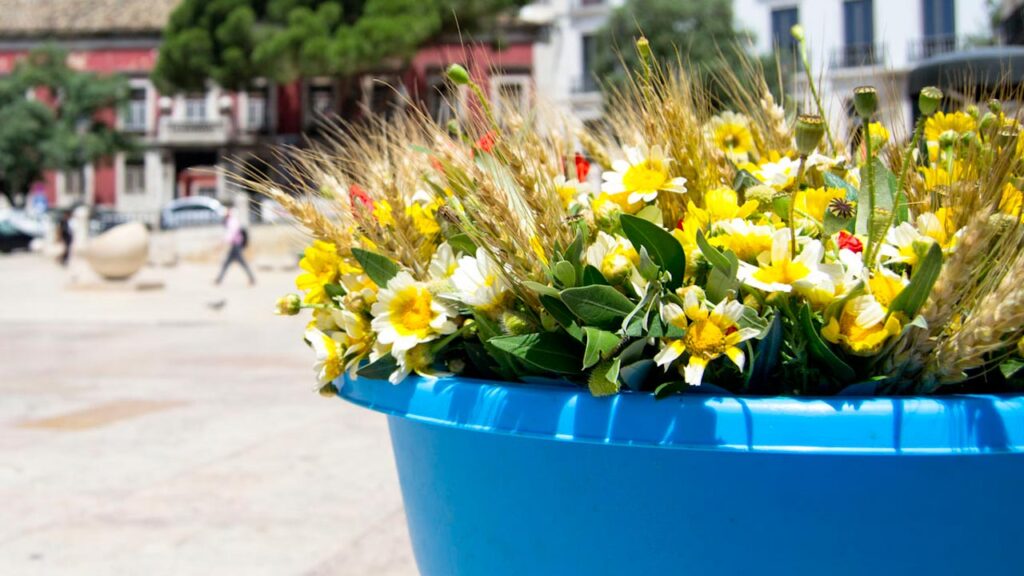On the Dia da Espiga (day of the ear of a cereal plant, usually wheat), during the morning, the streets of Lisbon are invaded by street vendors selling branches of ears. Some carry them in wicker baskets, and some fill strong-coloured plastic big bowls with fresh branches.
The Dia da Espiga is commemorated on the Ascension Thursday, the day in which Christians celebrate Ascension of Jesus into heaven, 40 days after the Resurrection.
People believe that the ears picked on that day provide happiness and abundance to the home. According to tradition, between 12.00 and 13.00 (holy hour), they go to the field and gather ears and wild flowers to form a branch.
This branch is hung upside down, behind the entrance or kitchen door or somewhere inside the house, until the Dia da Espiga of the following year, when it is replaced by a new one.

The main components of the branches are in general six, but may vary from region to region. Each component has to be an odd number and has a symbolic value associated to it:
- Ear of wheat – represents the abundance of Bread;
- Daisy – the yellow and white daisies symbolise Gold and Silver;
- Poppy – symbol of Love and Life;
- Olive – the olive branch carried in a dove’s beak is the universal symbol of Peace, but it also refers to the light of an oil lamp and to the Divine light;
- Rosemary – transmits health and strength;
- Grapevine – associated to wine and Joy.
How Did the Dia da Espiga Become a Tradition?
The exact origin of this tradition with greater relevance in the Centre and South of Portugal is unknown. We believe that it is related to the pagan rituals, long before the Christian era. Rituals that were connected to the homage to the goddess of Flora and to the celebration of the end of winter and the beginning of spring, when Nature was consecrated so that it would bring the promise and hope for new harvests.
On the Dia da Espiga the blessing of the first fruits harvested was carried out, a ritual adopted posteriorly by the Christians. Similarly to other ancestral pagan feasts, the Church Christianised this celebration that crossed centuries with double meaning: Ascension of Jesus to Heaven for the Christians and the Dia da Espiga, a non-religious practice of the agricultural environment.
On this sacred day no one went to work, as people believed that Nature itself stopped, but in 1952 the public holiday was abolished. This fact was highly contested, reason why many Councils adopted this day as a municipal holiday.
With or without holiday, it is certainly commemorated in many places of the country. In the cities, including Lisbon, the tradition of having a branch on the Dia da Espiga remains alive. Although these are not gathered accordingly to the tradition, during the holy hour, what’s important is that it persists and the sale of these branches much contributes to this.
Its sale now extends to florists that add details according to their taste. But the traditional branches are sold on the streets and their colours bring the countryside feel to the city.
If you’re visiting Lisbon, we suggest you join this tradition and take with you a branch of ears. This is a good reason for you to come back next year and renovate your wish for happiness and abundance.
That we should want for nothing! ☺


| Never miss another article | Subscribe here |
The project getLISBON has been very rewarding and we want to continue revealing the singularities of fascinating Lisbon.
Help us keep this project alive!
By using these links to make your reservations you’ll be supporting us. With no extra costs!
• Looking for a different experience? We can create a customised itinerary based on your interests. Contact us!
• Or if you prefer tours and other activities in various destinations, take a look at GetYourGuide.
• Save time and money with a flexible Lisbon Card!




